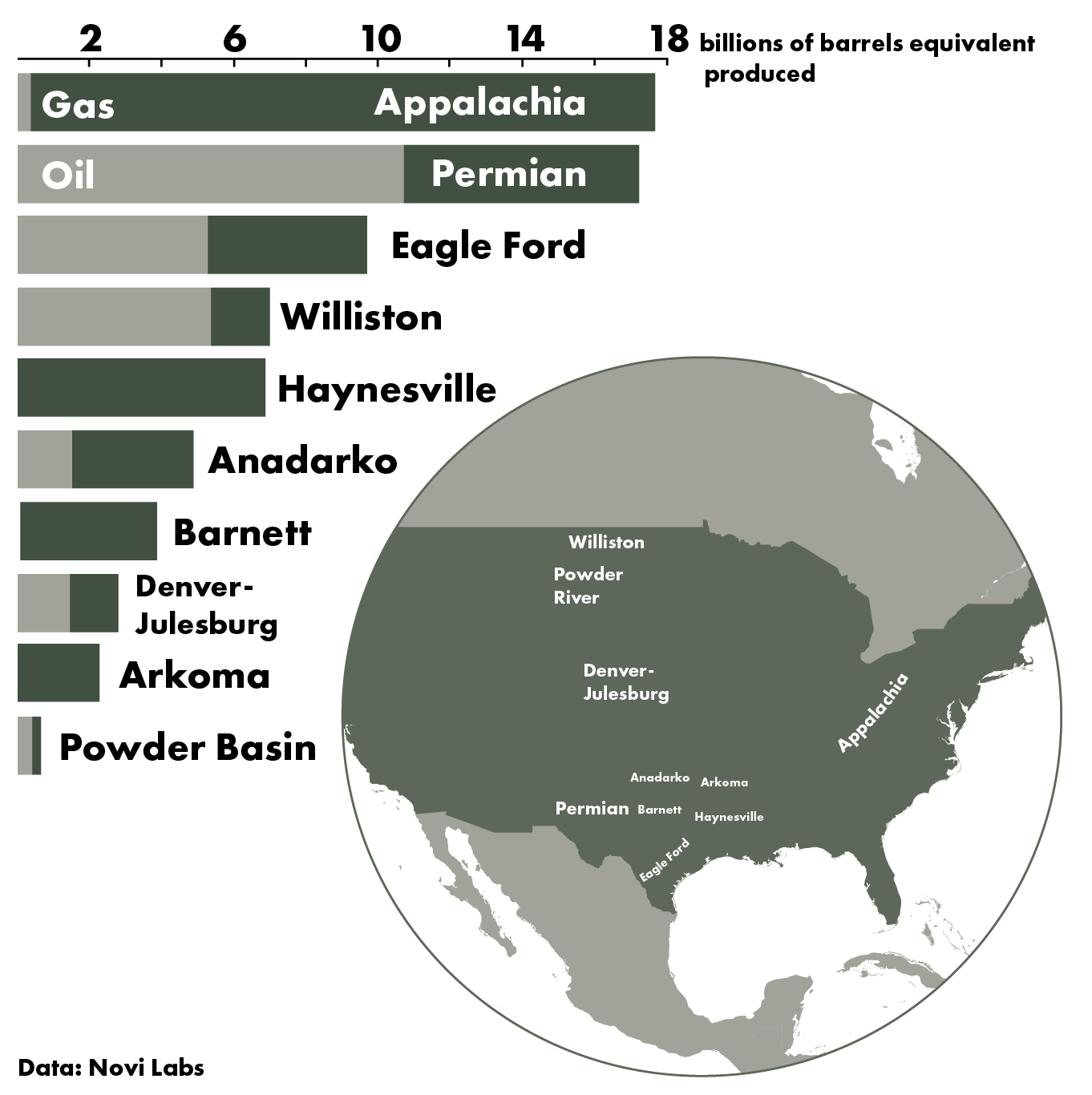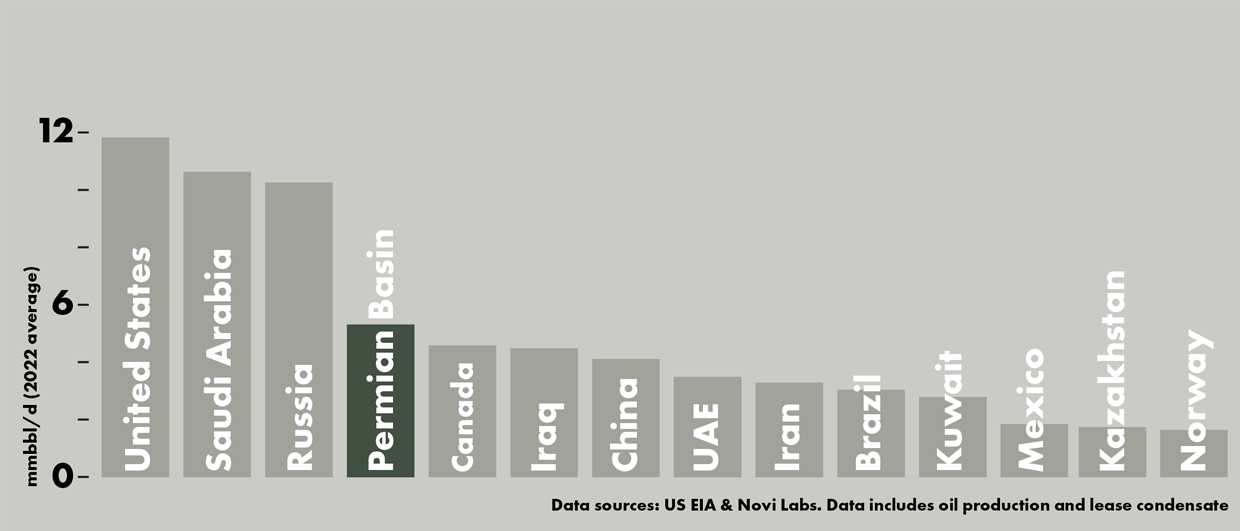Nestled in the vast brushlands of West Texas and New Mexico, the Permian Basin quietly outstrips the oil production of countries like Iraq, Iran, or Canada, a fact that often astonishes those not in the know. In my own home of Austin–not exactly an oil town–dropping this nugget of information never fails to amaze. The inevitable question follows: “How is this possible?”
It’s all about the perfect storm of innovation meeting vast resources. The American oil industry’s embrace of hydraulic fracturing and horizontal drilling has unlocked immense oil reserves trapped in the Permian’s tight rocks. If the Permian were a country, it would be the number three producer in the world. Well, technically it would be number four after the rest of the U.S., where other “unconventional plays” like the Permian have been unlocked through technology.
Thanks to these unconventional resources, the US has become the top oil and gas producing country in the world, dramatically lowering cost of living here in the US, driving an industrial renaissance, and revitalizing our energy independence. After our recent wave of inflation, it’s certainly worth appreciating how little gasoline prices and home heating prices have risen over the last twenty years.

Zooming out more broadly, the Permian’s story is part of a larger narrative of North American energy dominance. The numbers are jaw-dropping: over 25 billion barrels of oil and 300 trillion cubic feet of gas have been coaxed from unconventional reservoirs in the US.
Looking at the data, Appalachia and the Permian stand clearly above the rest on energy produced; with the Permian over 10 billion barrels produced and over 16 billion barrels equivalent; Appalachia is just slightly ahead but that’s over 90% gas, with much lower value.
As someone who used to work conventional exploration, these numbers are almost hard to believe. For context, the greatest conventional exploration success of the last decade–Guyana’s Stabroek block–currently contains 11 billion barrels of recoverable reserves across its many discoveries. Of course, the economics of the deep-water are very different than shale, but imagine the reaction if those fields were found today offshore Texas!
A few other interesting comparison points: the East Texas oil field, the largest in the L48, produced over 5 billion barrels. Prudhoe Bay, the largest in the US, has produced over 12 billion barrels, and Mexico’s largest field Cantarell has produced over 13 billion. So the Permian is coming for North America’s top-field crown!




